Nikon Z50 Mirrorless Camera Review:
Nikon showed everyone last year they were serious about mirrorless when they released the two full frame Z6 and Z7 bodies. This year, they release another Z series camera: the Z50. Unlike the previous Z cameras, the Z50 is smaller, and a lot cheaper. It also isn’t full frame. Instead, it has an APS-C sensor, which means its primary competition are cameras like the Fuji X-T30. Let’s take a closer look by starting off with the overall build and ergonomics.
(On a side note, I just wanted to mention that this review ended up a little shorter than I wanted it to be because I had hurt my back. For instance, I would’ve liked better high ISO shots. It’s still over 3,000 words though, and my back is much better now 🙂 ).
Nikon Z50 Mirrorless Camera Build Quality:
The build of the Nikon Z50 is quite decent, and definitely in line with its competition. It doesn’t quite feel as well made as its more expensive siblings but then again, there is also a huge price difference between them. With that said, you can definitely see the family resemblance between the Z50, and its siblings. Furthermore, the Z50’s body is very solid thanks to its magnesium alloy chassis. It’s also weather resistant, which is a huge plus for those that work in harsh climates. Price wise, I think it’s pretty fair, and with the zooms, actually a great deal: you can buy just the body, which is priced at $856.95. You can also buy the Z50 with just the 16-50mm zoom for 996.95 or you can buy the camera with the 16-50mm and the 50-250mm for just $1,196.95 ($150 rebate right as of this writing). I requested for the kit with both zooms to review.
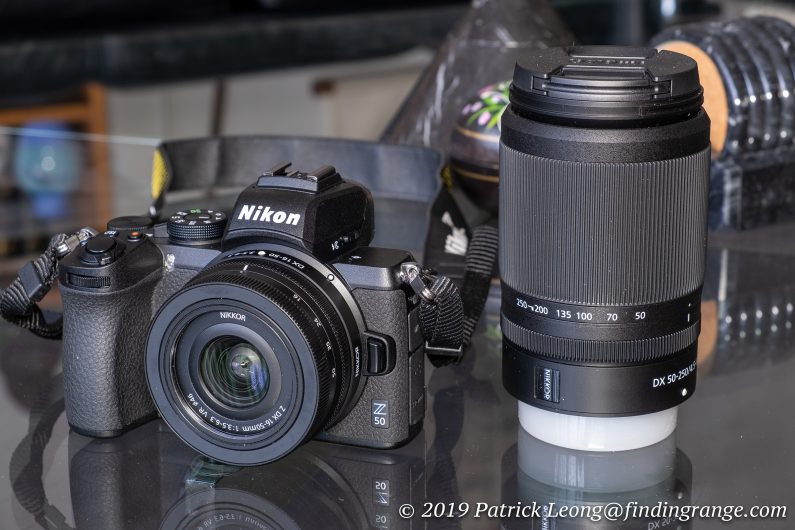
↑ The Nikon Z50 with the two kit zooms: NIKKOR Z DX 16-50mm f3.5-6.3 VR and NIKKOR Z DX 50-250mm f4.5-6.3 VR.
In terms of size, the Z50 is very compact. With the 16-50mm zoom attached, it isn’t exactly pocket size but it’s close enough. At one point, I was bringing the Z50 along to my shoots. I use a Billingham 307 for my shoots, and the Z50 with the standard kit zoom fit just in in one of the front pockets. The Z50 is definitely something that will be easy to carry around all day while you’re street shooting or on vacation.
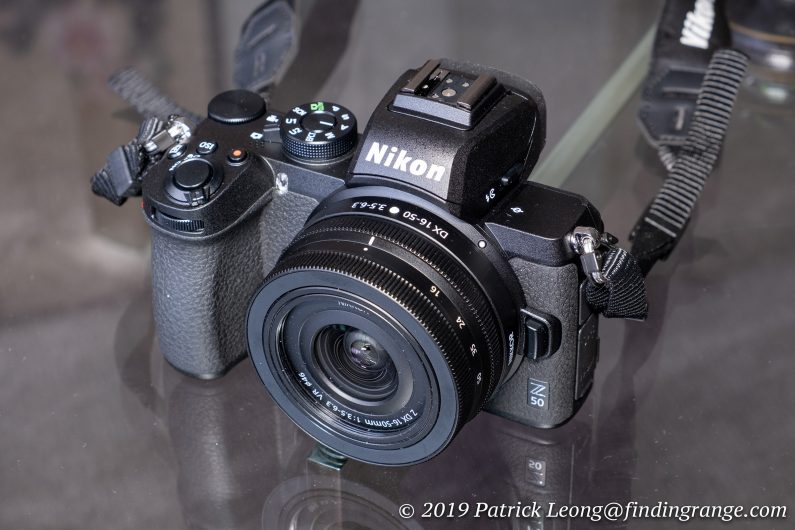
↑ The Nikon Z50 with the 16-50mm attached make a great combo for everyday shooting.
As for overall ergonomics, the Nikon Z50 is one of the better cameras out there. In fact, I would argue that the ergonomics are one of the major strengths of the Z50. The camera is so compact yet comfort is not sacrificed. On the contrary, the Z50 is extremely comfortable to hold and use. The grip is just about perfect for my hands. It isn’t too big or small, and it offers plenty of support and comfort. I let one of my photographer friends shoot with it for a bit, and he loved the feel of it as well. I reviewed the Fuji X-T30 before (review here), and to me, the Nikon’s grip is definitely a lot better. I hate to say it but I think I may prefer it over my X-T3’s grip as well.

↑ The top plate of the Z50.
The button layout, functions, dials, and scroll wheels are also place nicely on the Z50. For instance, despite this camera being so compact, none of the buttons on the back feel like they were crammed in or anything. It’s not cluttered, and nothing gets in the way where you might press something accidentally. The dials are also placed logically and intuitively. Everything is just easy to use; some of you might not even need the instruction manual. We are missing the top LCD display that can be found in the Z6 and Z7 bodies, and there also isn’t a joystick, which seems to be the rage these days but you have to remember that this camera is very compact, so something like a top LCD display just wouldn’t fit. Also, having no joystick isn’t the end of the world; it does not affect the way that this camera handles in any negative way. Like I’ve been basically saying this whole time: the camera handles terrifically. Overall, I really love the feel of this camera. Nikon did a great job with the ergonomics, which is not easy to do with a small camera because of the limited space.
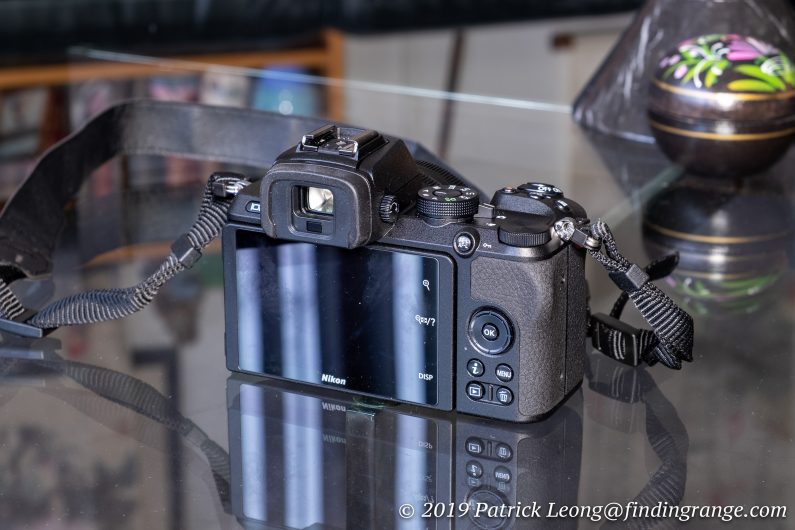
↑ The back of the Z50 is uncluttered making the camera easier to grip overall, and less complicated.
As for composing your photos, The Nikon Z50 has a 2360k-dot electronic viewfinder (EVF), and a 3.2 inch 1,04m-dot tilting and touch LCD display. I found the EVF to be excellent and in line with the Z50’s competition. It’s very easy to compose images with because it’s easy to see through it. Color, contrast, and brightness are great. It’s also very sharp and clear. The LCD display is up to par with the EVF as well; it’s excellent for viewing images you took or taking that selfie because the screen does tilt 180° downward to face you.
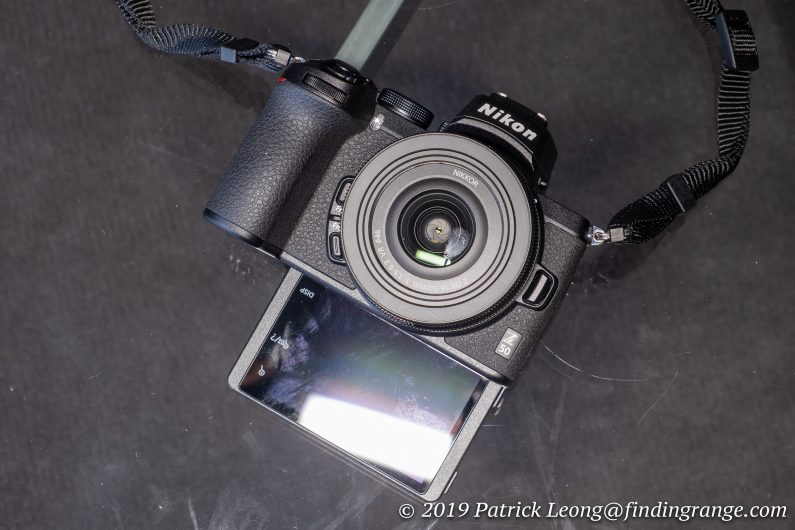
↑ You can tilt the LCD display 180° downward.
Other features include 4K video up to 30fps, and battery life that is suppose to be good up to 300 shots or about 75 minutes of video recording. I don’t really shoot much video but I can tell you that I felt the battery life estimate was a bit conservative when it came to shooting photos. Usually, when I get a new camera to test, I charge it every night before I go out the next day but with the Z50, I didn’t do that because I didn’t feel like I needed too. The battery life on this camera is pretty good in my opinion, and I was testing it in December/January, which can get rather cold here in New York City. The only minor complaint I have is with the battery door. There’s no spring action to the door when you open it, so it feels a little flimsy. Also, the Z50 only comes with one memory card slot but so do some of its competitors like the Fuji X-T30. Lastly, there is a pop up flash, and Dual Detect Optical VR, which helps to reduce camera shake.
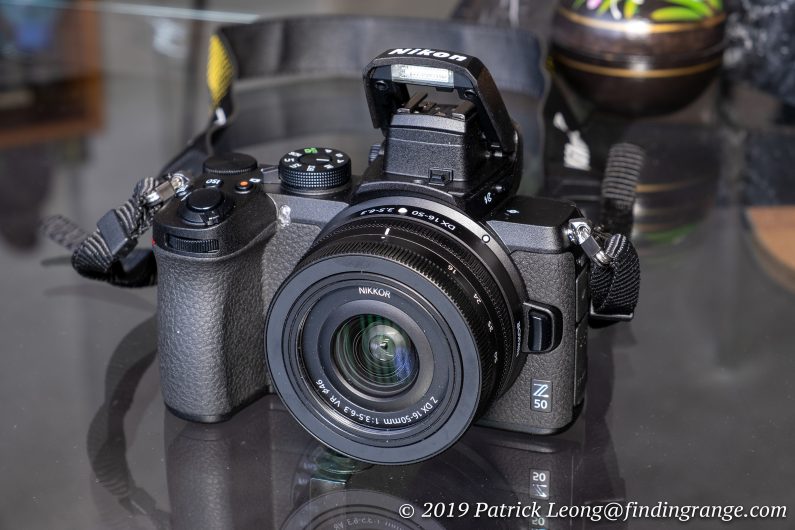
↑ There is a pop up flash as well.
Nikon Z50 Mirrorless Camera Autofocus:
As for the autofocus, there are 209 focus points that cover about 87% of the image area horizontally, and about 85% vertically. It’s a hybrid AF system, so it uses both phase detection and contrast detection. There is also Eye Detection AF, and the Z50 can shoot up to 11 fps.
Overall, I didn’t have any real trouble with the AF. I was testing the Nikon Z50 with the two kit zooms, and I found the AF to be plenty fast for a variety of subjects from street, models, candids, and pets. The focusing is nearly instantaneous and accurate. While maybe not the best for purely sports, the AF in the Z50 is good enough for the occasional action event. For what I shoot, the AF in this camera did not leave me wanting for more.
It’s worth noting that the Eye Detection AF is also great. As I mentioned earlier, I brought along the Nikon Z50 to some of my model shoots to test it out. The Eye Detection AF locked on tenaciously I might add, and I had no problems getting in focused images. The focus was almost instantaneously too, so the rhythm of the shoot was never affected. The models kept changing poses with each click of the shutter, and the camera kept up with getting accurate, tack sharp images.
Nikon Z50 Mirrorless Camera Image Quality:
Now, let’s talk about the image quality. The Nikon Z50 employs a 20.9MP DX-Format CMOS sensor, and EXPEED 6 image processor to produces its images. Overall, I found the photos to be excellent. The color rendering, and contrast are great; I found the images produced looked beautifully vibrant with nice saturation BUT also realistic, which is important to me. White balance also seemed to be fairly accurate for the most part.
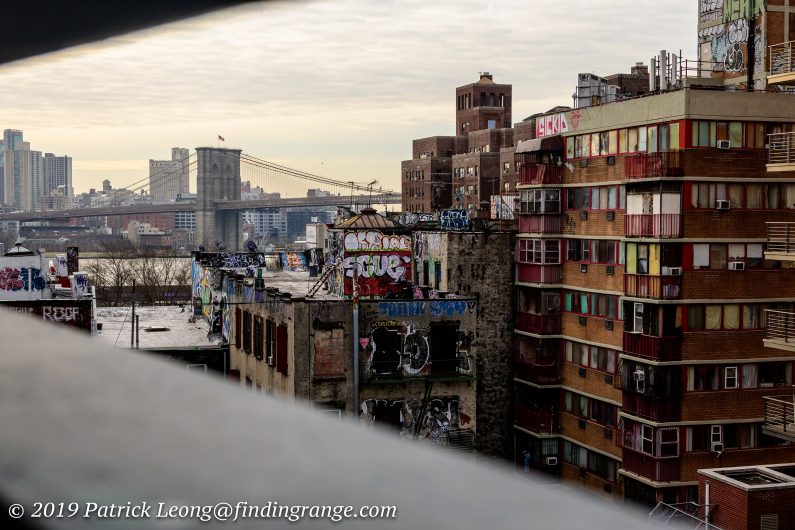
↑ This last shot was also taken with the 16-50mm f3.5-6.3-VR lens using 400 ISO, 1/400s. The lens was set at f8 and 34mm.
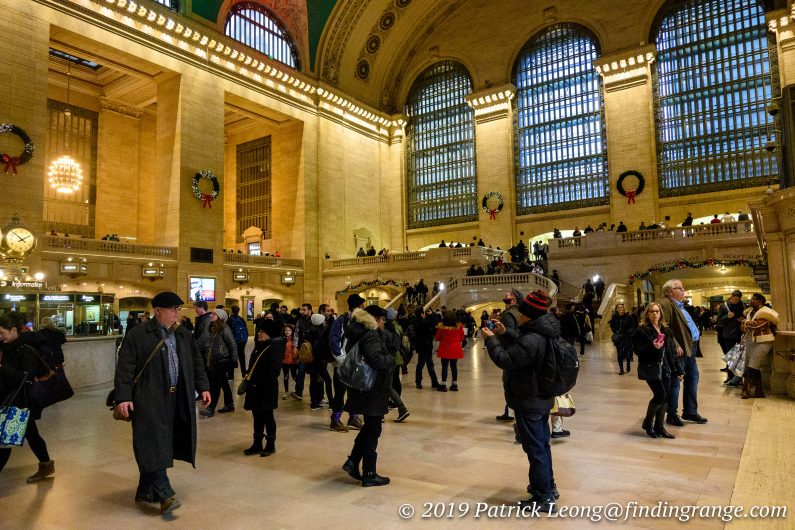
↑ This was taken with the 16-50mm f3.5-6.3-VR lens at 11400 ISO and 1/250s. The lens was set at f4.5 and 16mm.
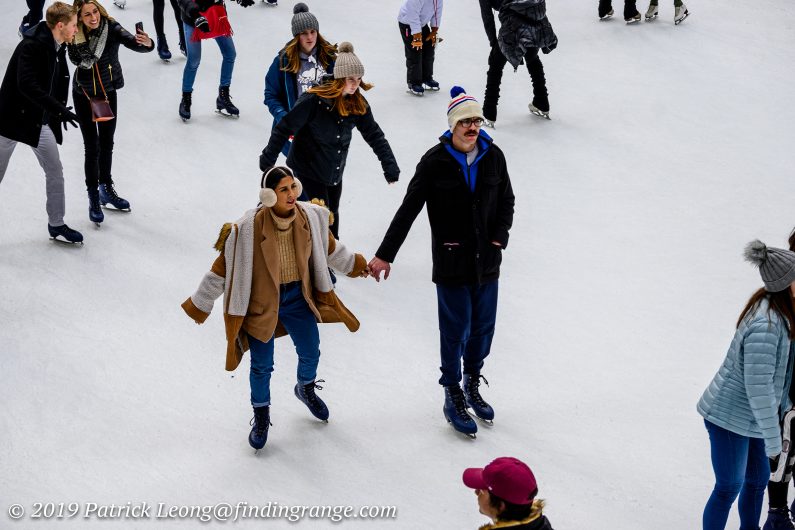
↑ This was taken with the 50-250mm at 100 ISO, f5.6 using the 75mm focal length.
It’s worth noting that the Z50 also shoots RAW files, if that’s what you want, and for the most part, that’s what I had the camera set too. However, I have to say, I really found the out of camera jpegs to be superb. In fact, I liked the out of camera jpegs more than I like the ones that come out of my Fuji X-T3, and as some of you know, Fuji cameras are famously known for producing great out of camera jpegs. So, if you’re someone who just doesn’t want to fuss around with RAW files, definitely give the out of camera jpegs a try. The three images below are straight out of the camera jpegs with no editing on my part. These are also the basic setting jpegs, not the fine quality setting. If you want to see more out of camera jpegs, you can view my first impression of the Nikon Z50.

↑ This photo was taken at 16mm and 100 ISO. The lens was set at f8.
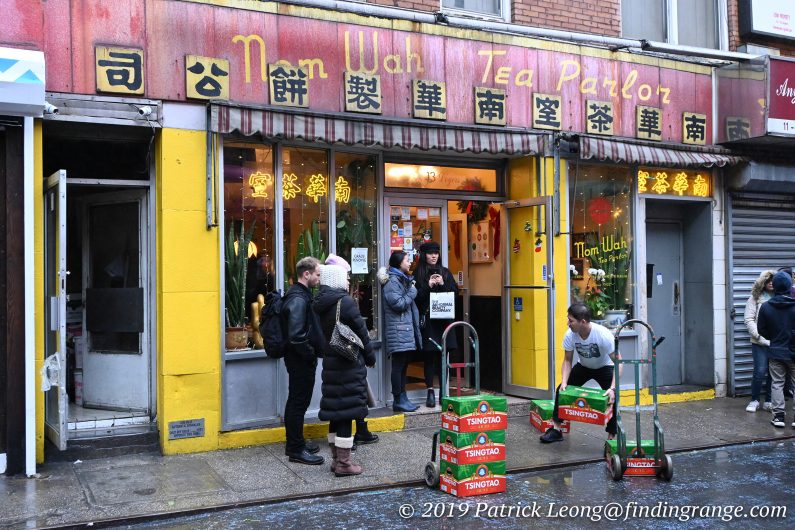
↑ Here I used the 24mm focal length and 3200 ISO. The aperture setting was f5.6.
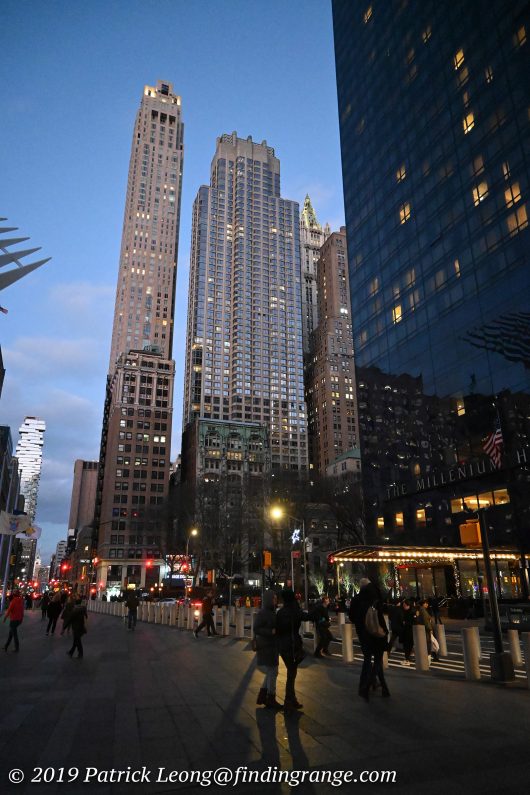
↑ This was taken using the 16mm focal length at f3.5. This was taken at 12800 ISO.
As for the lenses, this is where I think the Z50’s main weakness lies, at least for now. Quite frankly, there aren’t many native lenses out yet. Yes, you can use the Nikon Mount Adapter FTZ, which gives you access to approximately 360 NIKKOR F lenses but it’s not the same. Plus, a lot of those lenses aren’t exactly small, so I don’t think they would exactly match the Z50’s compact nature. But here is the good news. The two kit zooms are actually quite good. I found the image quality from the two are excellent.

↑ Here’s another taken with the 50-250mm at f8, 560 ISO using the 250mm focal length.
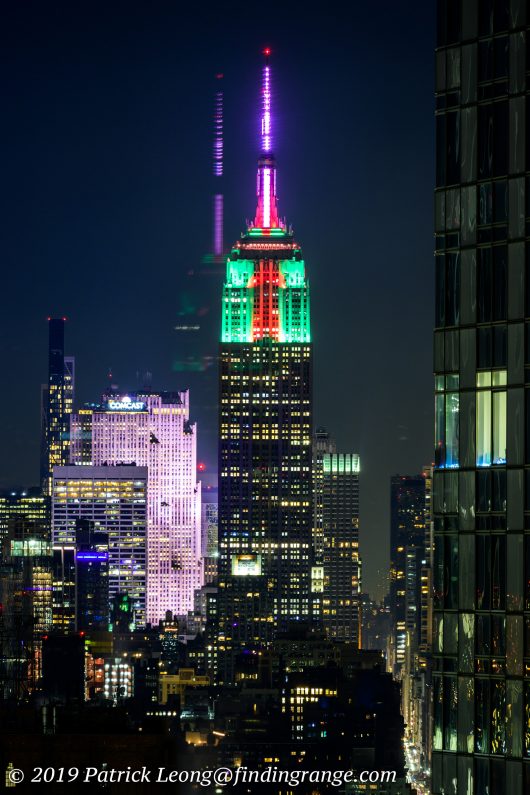
↑ This was taken on my Gitzo GT2542 (review here) with the 50-250mm zoom. My settings were f8, 100 ISO, and I was using the 250mm focal length. This was shot through a window, so image quality isn’t perfect, and as you can see, there are some reflections.
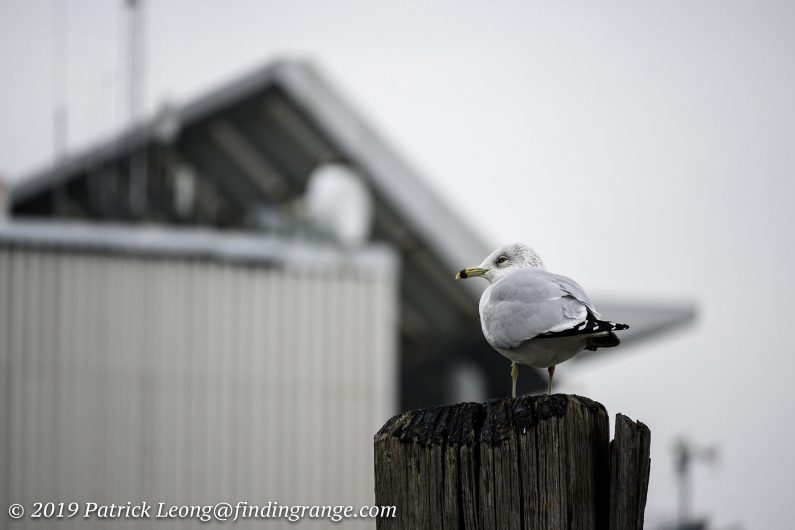
↑ Here’s another taken with the 50-250mm. The settings were 280 ISO, f6.3, and the use of the 250mm focal length.
I was going to review the two zooms individually but as I said before, I hurt my back, so I didn’t have as much time as I wanted. Instead, I’ll just tell you that if you do end up buying the kit with the 16-50mm or the kit with the 16-50mm and 50-250mm, I think you’ll be quite happy with their performance. All the images in this review were shot with just these two lenses. They are a little plasticky but they will get the job done. Plus, they’re collapsible for easier storage. The only thing is both lenses have modest maximum apertures, so you’ll need to use higher ISO at times.

↑ This photo was taken through a window like the one of the Empire State Building. I used the 16-50mm here, and zoomed in to 22mm. The settings were 100 ISO, and f8. I also used my Gitzo 2542 tripod here as well.
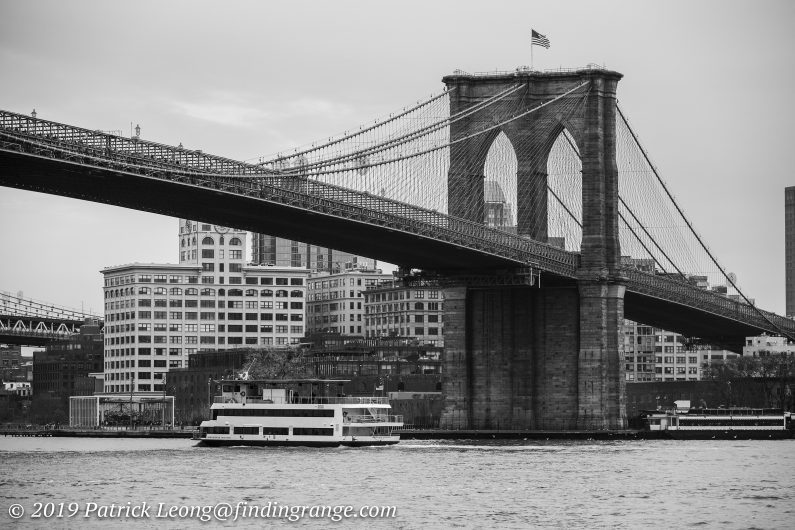
↑ I normally don’t use long focal lengths much but surprisingly, I found the 50-250mm quite useful. This was shot using the 85mm focal length, and the settings were f5, and 250 ISO.
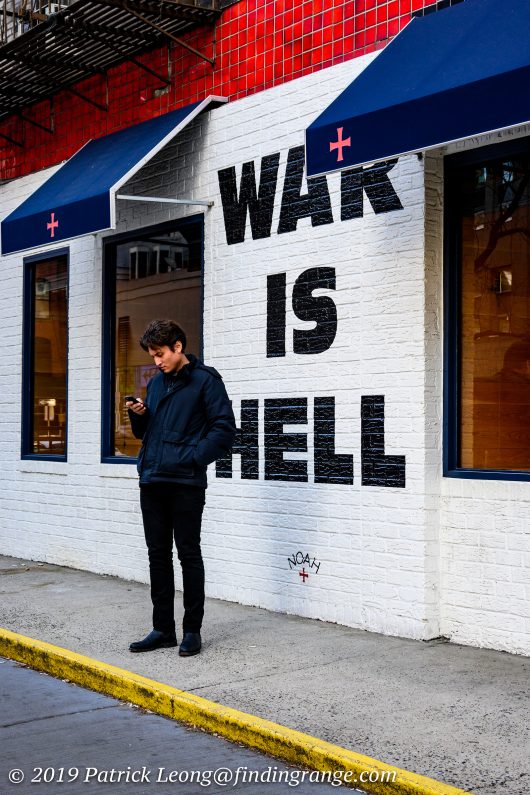
↑ This was taken with the 16-50mm zoom set at the 38mm focal length. The settings were 320 ISO and f5.6.
Luckily, the Z50 offers a range of 100 ISO to 51200 ISO with the ability to expand up to 204800 ISO. At least in my eyes, the high ISO is quite good too. I have not done any sort of scientific testing but just from what I see, the high ISO capabilities are in line with the competition. Of course, as you increase the ISO, noise does steadily creep in but in my opinion, you can shoot this camera all the way up to 6400 ISO without any major issues. Noise control and saturation are really well maintained all the way up this 6400 ISO. As you increase to say 12,800 ISO, there is more noticeable noise. Still, if you expose your images correctly, I think you can get away with some decent shots at this ISO setting.
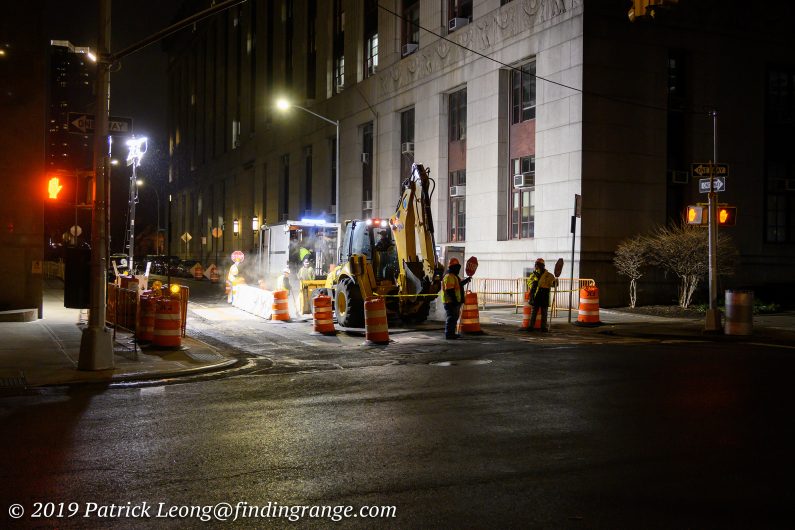
↑ This was taken with the 16-50mm set at the 25mm focal length. The settings were f4.2 and 3200 ISO.
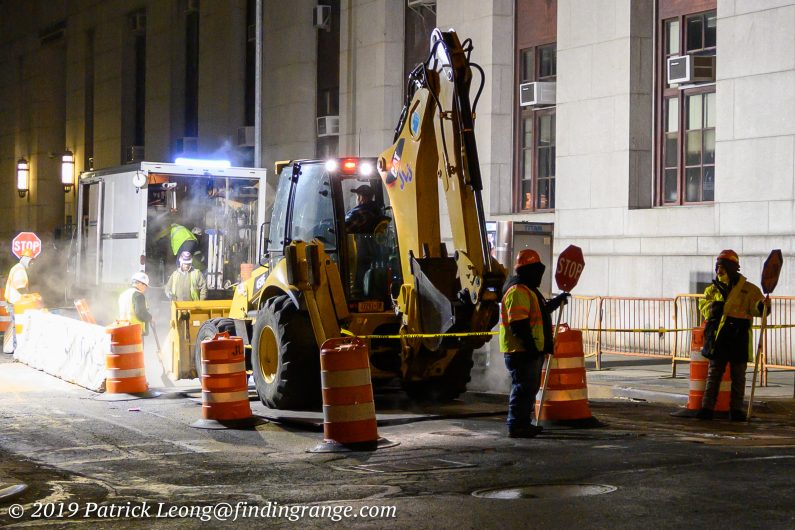
↑ Here’s a 100% crop of the photo above.

↑ This shot was also taken with the 16-50mm this time set at the 23mm focal length. This was taken at 6400 ISO with the lens set at f5.6.

↑ Here’s a 100% crop of the photo above.
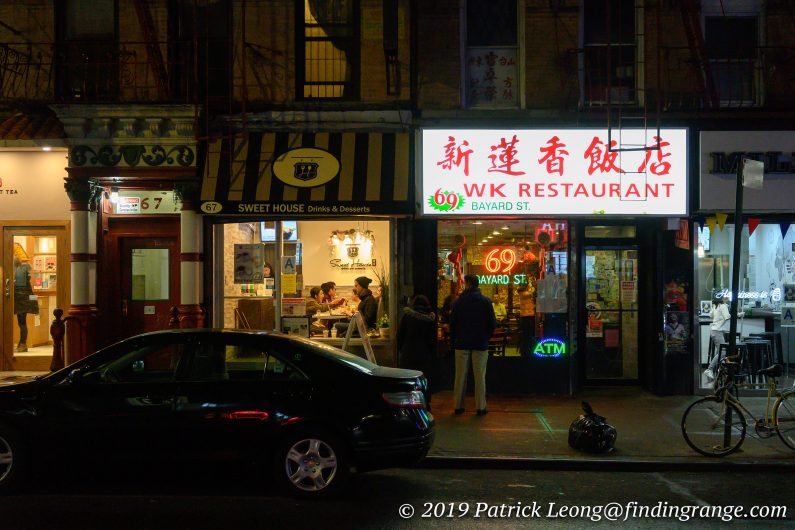
↑ Here’s another taken at 6400 ISO with the same lens as above. I used the 28mm focal length, and the lens was set at f4.5.
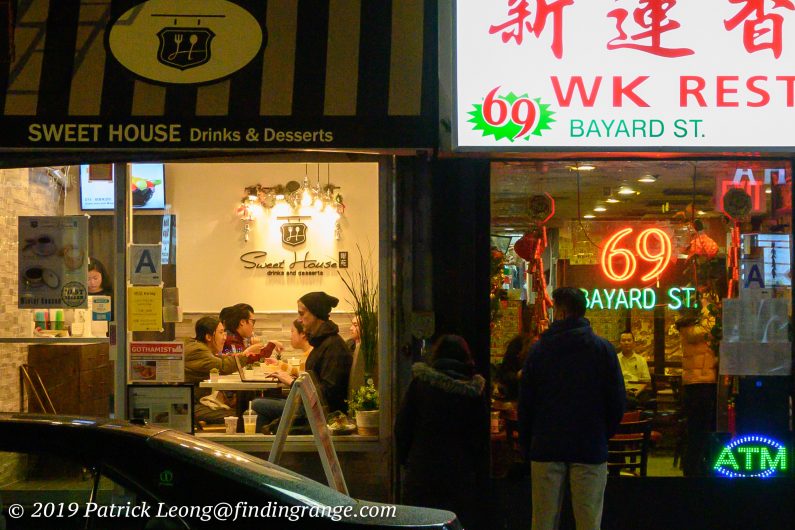
↑ Here’s a 100% crop of the photo above.
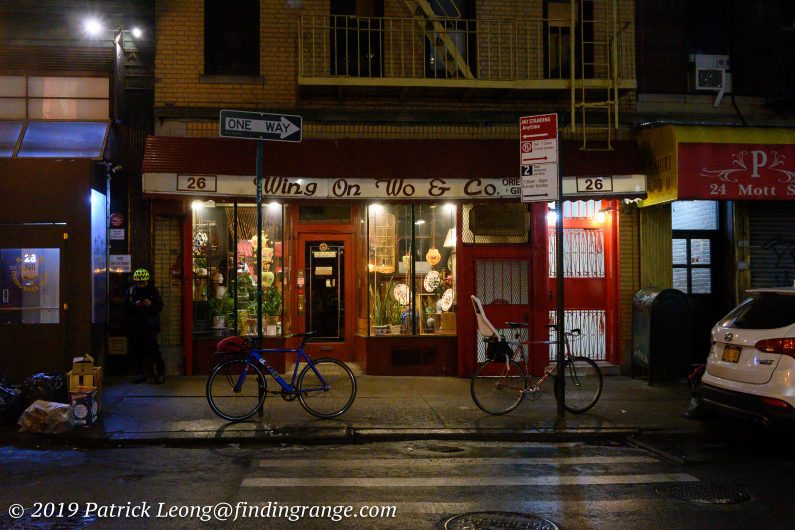
↑ This was taken with the same lens set at the 25mm focal length and f5.6. I used 12800 ISO here. As you can see, even at such a high ISO setting, the image is still useable.
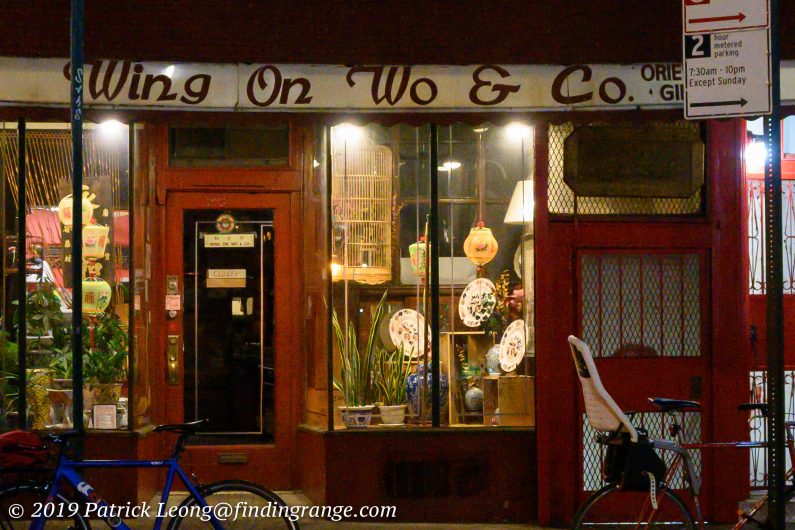
↑ Here’s a 100% crop of the photo above.
Anything higher than 12,800 ISO, I would use only if I had no choice. But I would say the same thing, if we’re talking about the X-T30 or my X-T3. This camera does shoot up to a whopping 204,800 ISO but I wouldn’t even use it. First, it’s more ISO than I would ever need (for my type of shooting, I had to force myself to use this speed because I had no issues using a lower setting). Second, the image quality just isn’t that great at this setting.
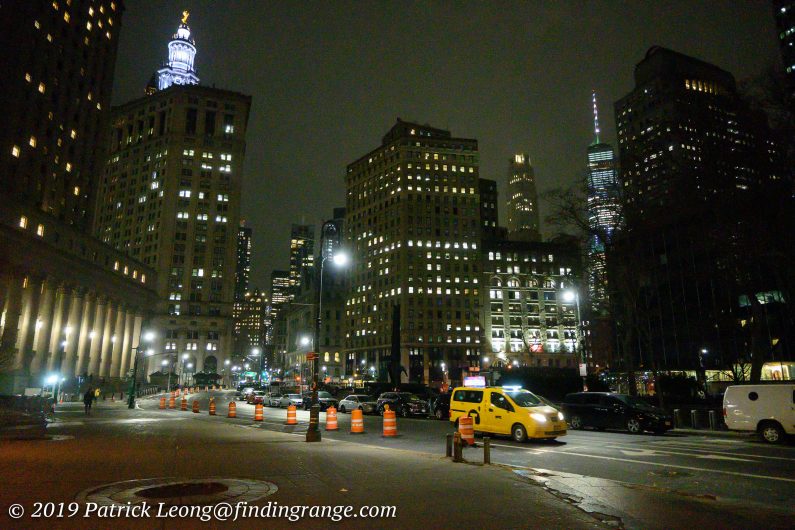
↑ This photo was taken with the 16-50mm set at 16mm and f3.5. I used 25600 ISO here. This is when things really get noisy.
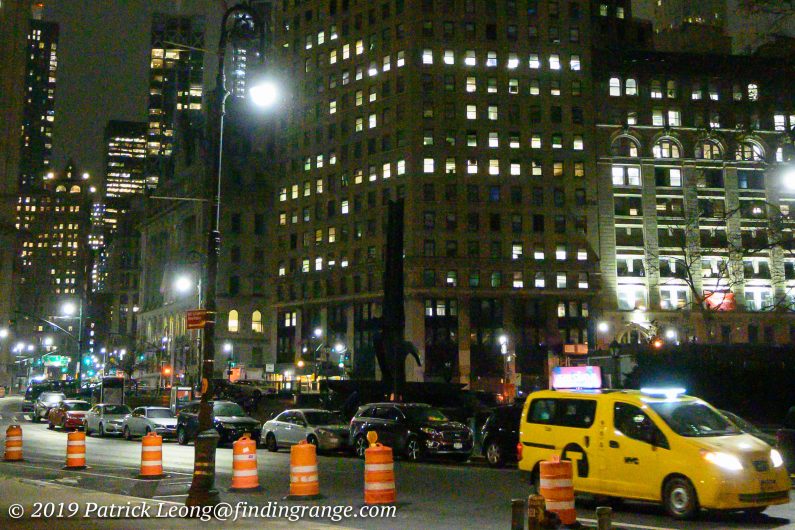
↑ Here’s a 100% crop of the photo above.
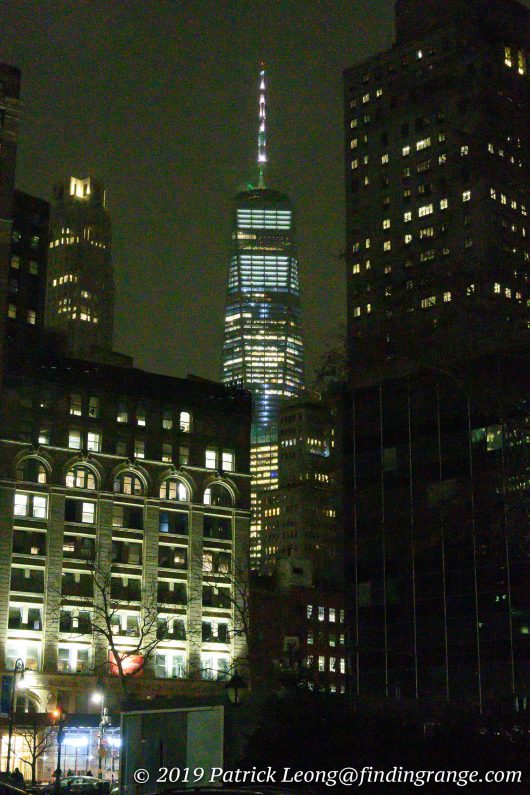
↑ This was taken with the 16-50mm using the 39mm focal length and f5.6. I used 51200 ISO here.
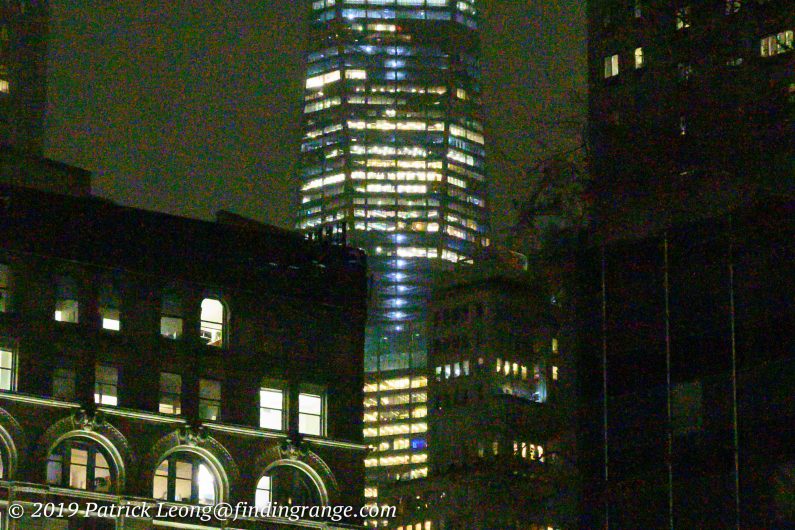
↑ Here’s a 100% crop of the photo above.
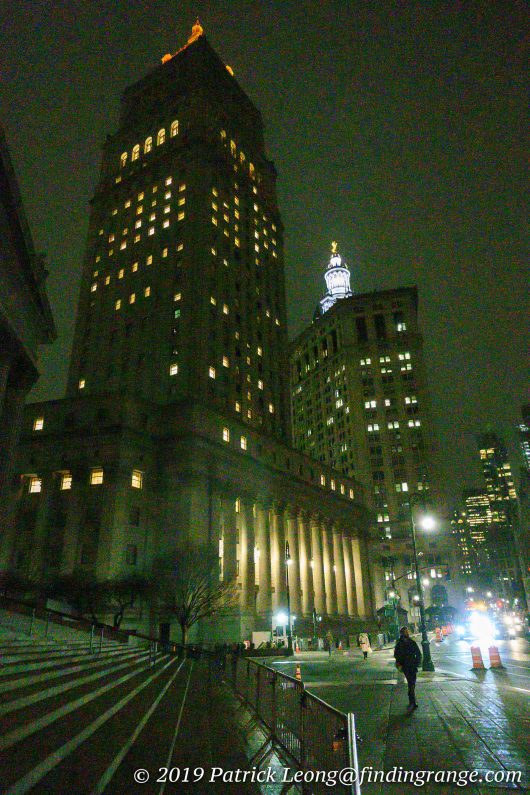
↑ Here’s one taken with 102K ISO. The settings were f4, and I used the 16mm focal length. The lens was the 16-50mm.
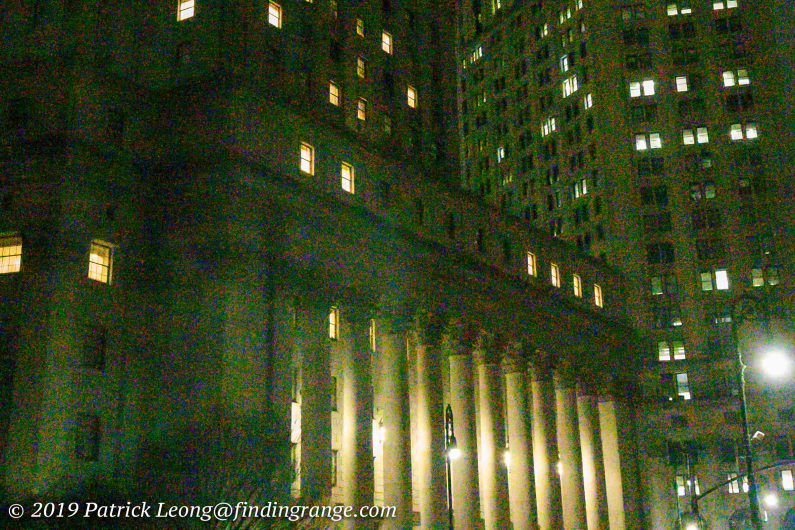
↑ Here’s a 100% crop of the photo above.
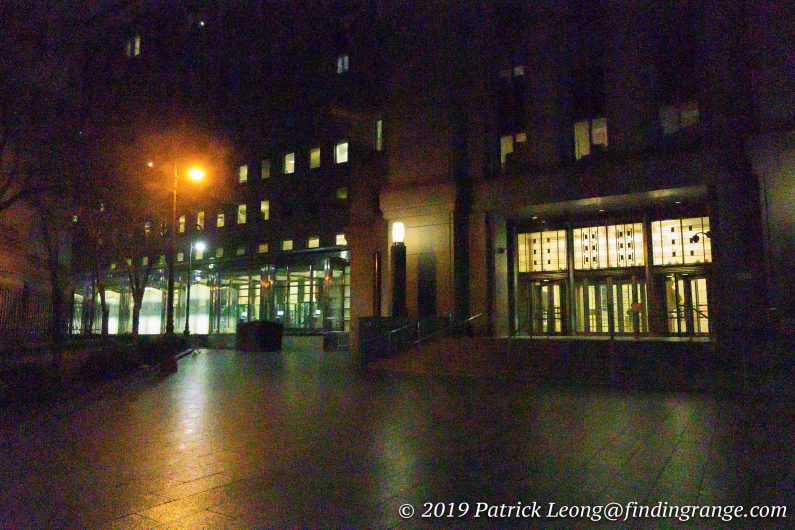
↑ This was taken with the 16-50mm set at 16mm focal length and f5.6. I used 205k ISO here. So yes, you can boost the ISO all the way up to a whopping 204,800 ISO, which is impressive but I would use it for emergencies only.
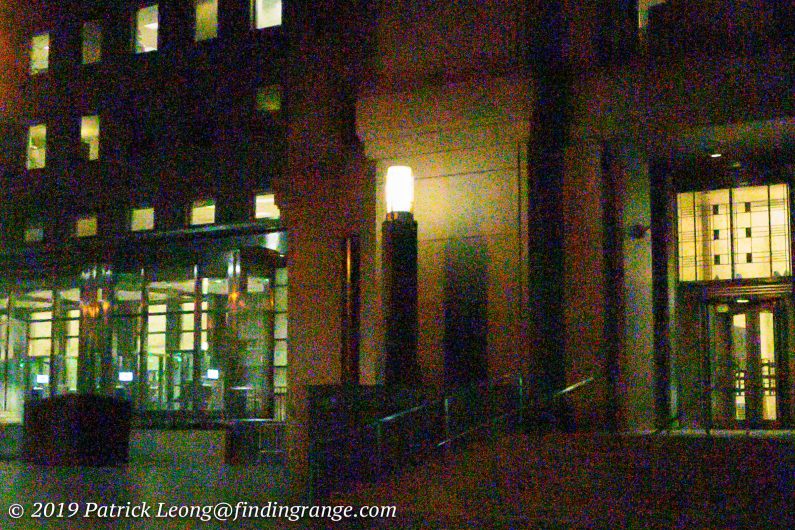
↑ Here’s a 100% crop of the photo above.
Nikon Z50 Mirrorless Camera Pros And Cons:
Nikon Z50 Mirrorless Camera Pros:
- Nice build.
- Fantastic ergonomics and handling. One of the best in its class in this regard.
- Weather resistant.
- great EVF and LCD display.
- Battery life is decent: the estimated rate seems conservative.
- Fast autofocus.
- Excellent image quality.
- Great out of camera jpeg quality.
- Kit lenses offer great image quality.
- Price is decent, especially the kits.
- Real potential here.
Nikon Z50 Mirrorless Camera Cons:
- This is just me being a little picky but I wish there was a spring action to the battery door.
- Needs more native lenses.
Nikon Z50 Mirrorless Camera Verdict:
There’s a lot of competition these days in the APS-C mirrorless market. There are so many different cameras to choose from that it can be a bit daunting sometimes to figure out what to buy. There’s almost too much choice :). Therefore, if you’re a manufacturer getting into this market, you better bring your A game. I seriously feel that the Nikon Z50 is good enough, and I think it makes a nice, real alternative to big players in this market like Fujifilm and Sony. I thoroughly enjoyed using this camera. I wasn’t expecting to like it this much but I do.
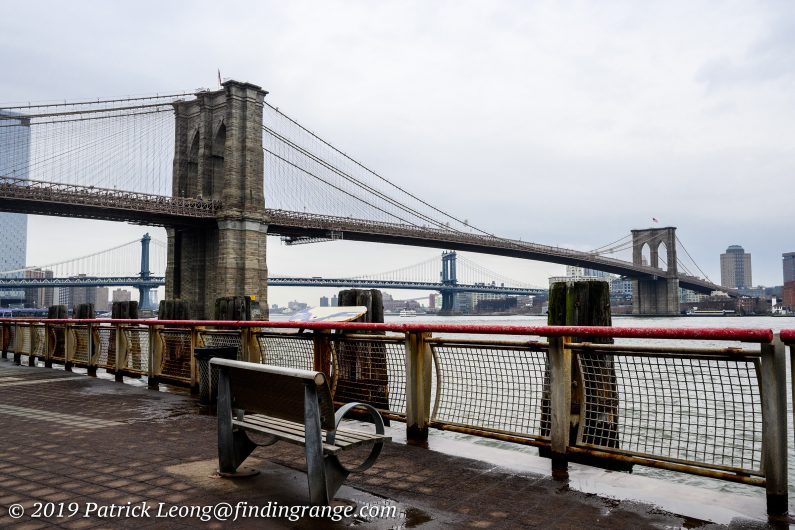
↑ This was taken with the 16-50mm set at 20mm. The settings were 450 ISO, and f8.

↑ Here’s another shot taken with the 16-50mm set at 25mm and f5.6. I used 2200 ISO here.

↑ This was also taken with the 16-50mm. I used the 16mm focal length and the settings were 180 ISO and f5.6.
It has a lot going for it. For one, the build is excellent, and it’s even weather resistant. The ergonomics are also superb; I feel this is actually one of its biggest strengths. This is one of the most comfortable cameras I’ve ever held, and the placement of the buttons are excellent. To top it all off, the autofocus is fast, and this camera produces some pretty amazing images just with kit zooms too.

↑ I think this is my only festive pic from the holiday season lol. This was taken with the 16-50mm set at 16mm and f5.6. I used 250 ISO.

↑ This was taken with the 50-250mm f4.5-6.3 VR lens set at 250mm f8 with 360 ISO.
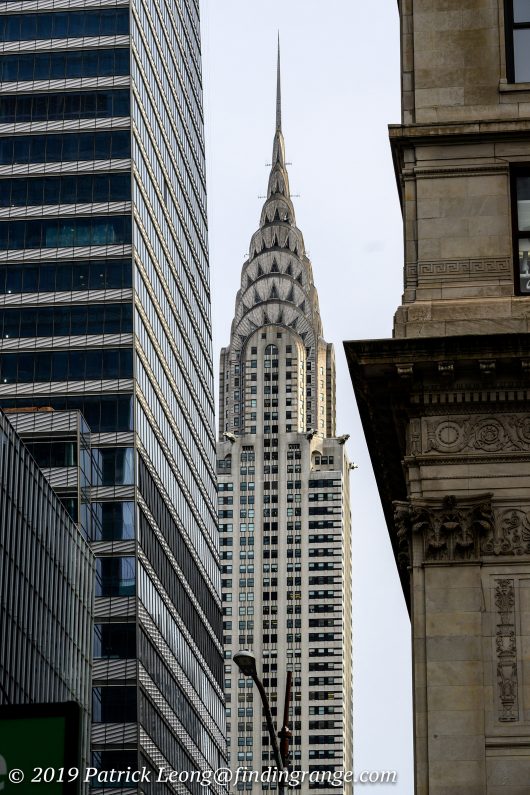
↑ This was also taken with the 50-250mm set at 70mm f8 with 125 ISO.
The biggest negative that I can think of is that the Z50 doesn’t have enough native lenses yet. Fujifilm and Sony have tons to choose from, and they even have a lot of third party manufacturers making lenses for them. But I think with a little more time, this won’t be an issue. Plus, if you’re already a Nikon shooter, the Z50 may be a better choice than the competition considering you could get the Mount Adapter FTZ, which will allow you to use F mount lenses.
In the end, you definitely have to pick a camera that you’re going to be happy with but don’t dismiss the Z50 simply because it had a late start. This is a really big effort on Nikon’s part. The Z50 definitely has real potential here, and in my opinion, it has all the features and strengths needed to compete in this jam packed market.
Thanks for taking the time to read my review! You can always find me on Instagram, Twitter, and Facebook. If you’re considering purchasing the Nikon Z50, and my review helped you decide, please help support this site by purchasing from the links below or any mentioned in this review. It will not cost you anything extra. Thank you for your support!
Nikon Z50 Kit with the 16-50mm at B&H Photo
Nikon Z50 Kit with the 16-50mm and the 50-250mm at B&H Photo

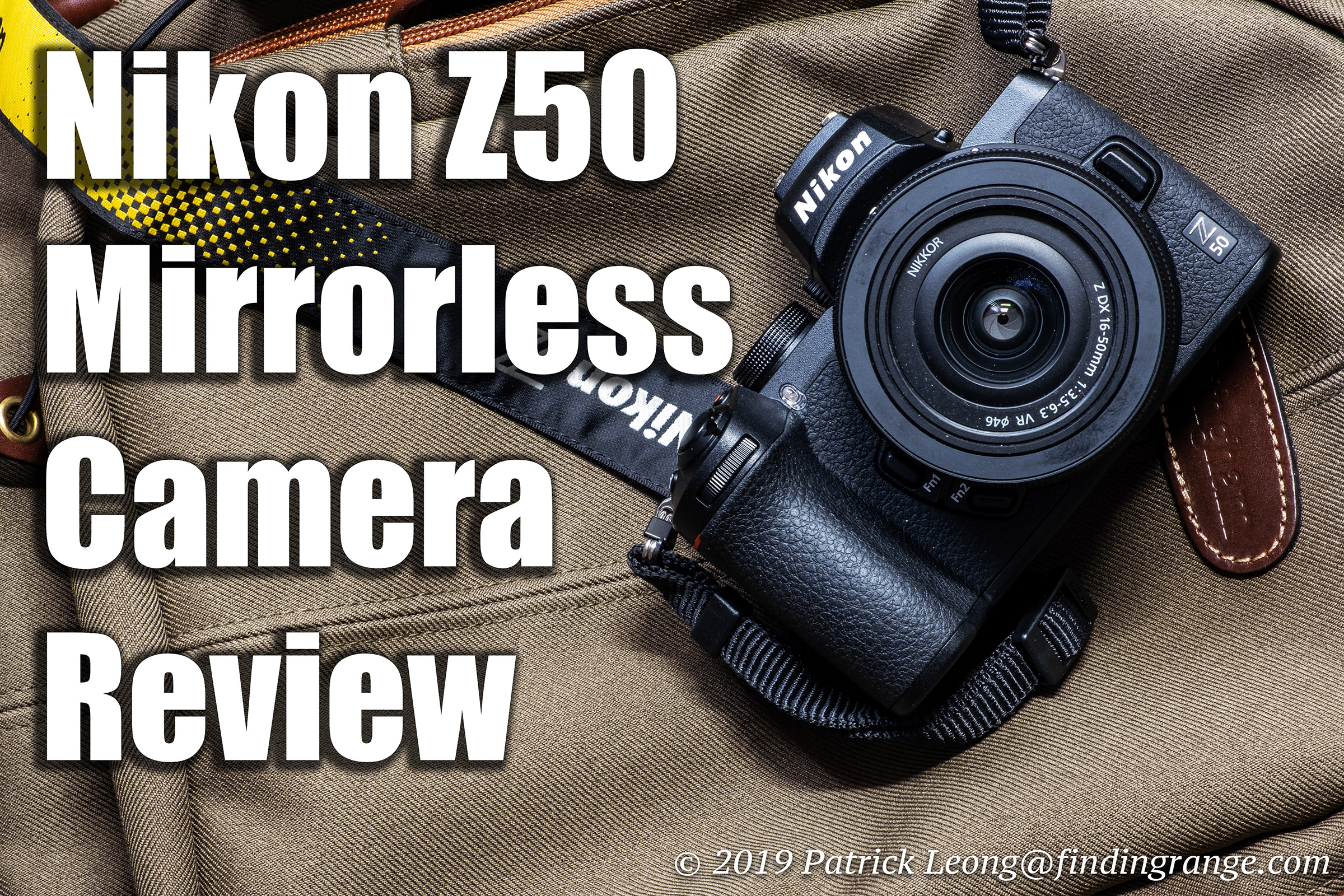
Lenses! Needs SMALL, high quality, reasonably priced, fixed focal length lenses with metal mounts.
Hi Sanford,
I completely agree. They definitely need to come out with some high quality lenses soon :).
Best,
Patrick